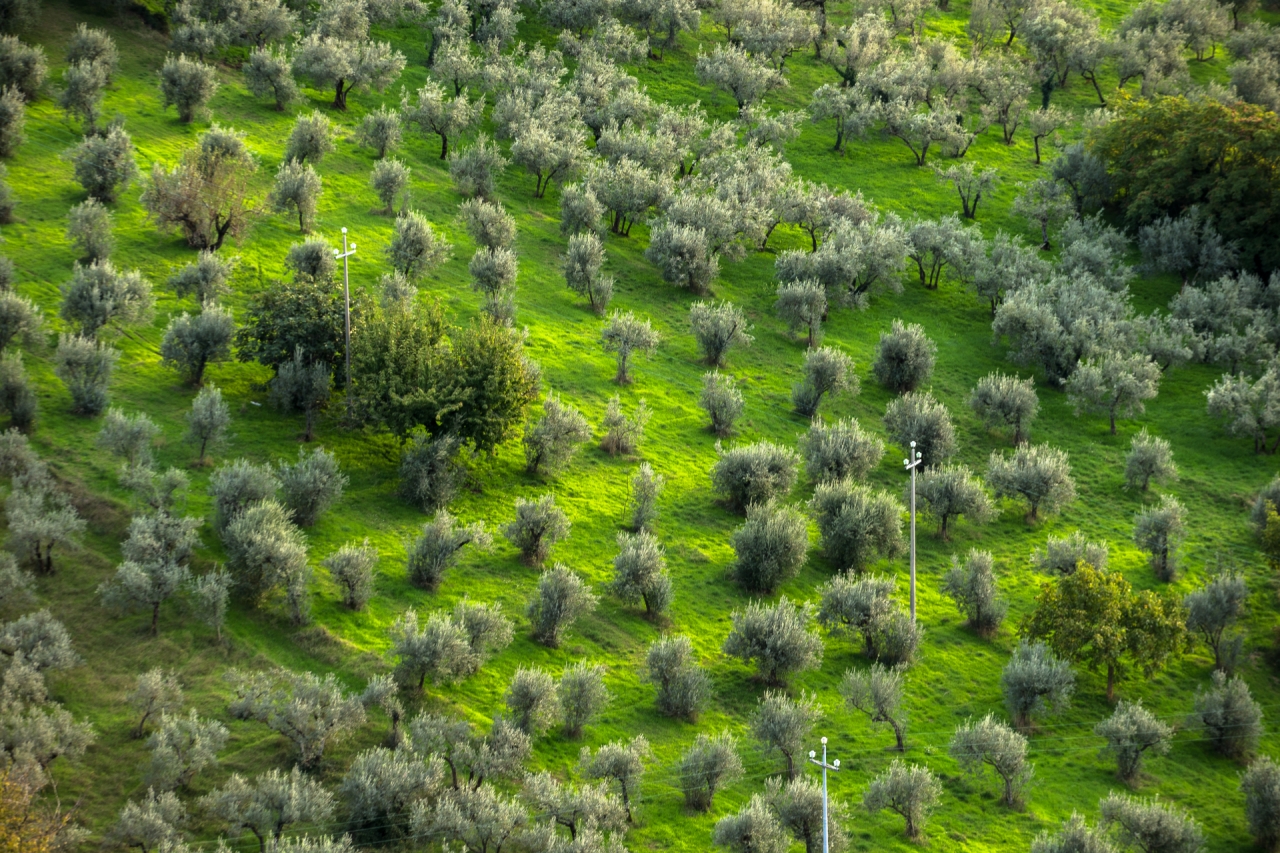
The olive belt between Assisi and Spoleto is the first Italian location to be recognised as a FAO heritage site
11 Jul 2018
There is an element without which Umbria’s immense architectural and cultural heritage would not be as unique. A green ocean that extends for 9212 hectares, composed of 1.2 million olive trees around Spoleto, Campello sul Clitunno, Foligno, Trevi, Spello and Assisi: a naturalistic and agricultural treasure unique in the world that makes Umbria as world-famous as its cities and villages. Now the “Assisi-Spoleto Olive Belt” will be remembered for another aspect, as the first Italian site to be included in the list of Globally Important Agricultural Heritage Systems (GIAHS) by FAO, the UN Food and Agriculture Organisation.
The goal of the GIAHS programme is to select the landscapes from around the globe that stand out because of their rich biodiversity and virtuous relationship between people and the surrounding environment. Through the project, FAO aims to protect traditional agricultural management techniques and use them as a tool for the sustainable development of protected areas. In so doing, preserving the traditional landscape becomes a promotional factor, to the advantage of the local population.
“This recognition is the result of a virtuous synergy between public and private actors and would not have been possible without the communication and collaboration among the six municipalities involved, the farmers and producers and the know-how of which Umbria is rich. It demonstrates that when everyone pulls together with shared objectives, anything is possible,” explains Mauro Agostini, General Manager of Sviluppumbria, the Umbria Regional Agency for competitiveness and economic growth. “We expect many benefits from inclusion in FAO’s GIAHS programme,” Agostini continues, “such as increasing the economic value of olive oil produced in the registered area, enhancing the social, cultural, economic and tourist value of the land, protecting olive biodiversity and preserving and restoring the landscape at risk.”
“FAO’s designation,” adds the mayor of Trevi and coordinator of the project, Bernardino Sperandio, “is also a worldwide recognition for the many generations of farmers who, over the centuries, have set up production using only the local natural resources and have been able to adapt their management practices to the needs and peculiarities of the land.”
Inclusion in the FAO-GIAHS programme was obtained after a careful evaluation by the technicians of the international organization on five parameters: agricultural biodiversity, a system of local knowledge and traditions, a set of shared values, the economic sustenance of the population and the peculiar and unique characteristics of the landscape in question.
“It is the climate itself that represents one of the particular factors making the Assisi-Spoleto Olive Belt unique and extraordinary, a reservoir of great biodiversity,” explains Leonardo Laureti, agronomist and olive producer, who collaborated on the dossier for the FAO candidacy. “Unlike regions where olives are typically cultivated, which are close to the sea, ours has a continental climate. Strong temperature variations occur, with very cold winters, while summers can be extremely hot. Statistically, a frost occurs every thirty years or so, which can cause considerable damage to the trees. These factors, which may appear like misfortunes, are actually the key to success because they ensure the final product an absolute excellence of quality. In addition, there is another specific element of this location. The foothills of the pre-Apennine chain have a calcareous soil which ensures ideal drainage for the olive, avoiding water stagnation.”
“Over the decades, the olive variety typical of this area, Moraiolo, has adapted to these particular soil and climate conditions, producing an oil rich in polyphenols with an herbaceous olfactory character and strong bitter and spicy notes, appreciated throughout the world,” Laureti concludes.
But FAO’s announcement may not be the only important worldwide recognition protecting the Assisi-Spoleto olive belt. Its inclusion in the GIAHS list could give impetus to another, even more ambitious objective: recognition as a UNESCO World Heritage Site. “In this case, too,” explains Sperandio “we must go through a complex candidacy procedure to UNESCO, with in-depth studies and analyses on the environmental and landscape heritage. At that point, our olive trees could be recognised as a site of exceptional universal value.”



